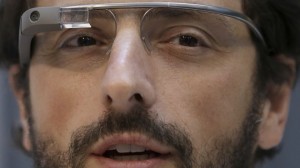Wearable computing – the use of personal computers, displays and sensors worn on one’s person – gives us the potential for advancement in human-computer interaction compared to traditional personal computing – for example the ability to have constant access and interaction with a computer – and the Internet, whilst going about our daily activities.
This could be considered the ultimate in multitasking – the use of your computing device at any time without interrupting your other activities. For example, the ability to read an email or retrieve required information while walking or working on other tasks. Wearable computing potentially offers much greater consistency in human-computer interaction – constant access to the computer, constant connectivity, without a computing device being used in an on-and-off fashion in between other activities.
Once contemporary example of this is the new Google Glass, which represents an advanced, sleek, beautifully designed head-mounted wearable computer with a display suitable for augmented-reality applications – or just as an “ordinary” personal head-mounted display. Even before its public release, the frenzy surrounding Google Glass amongst technology enthusiasts demonstrates the potential level of market demand for wearable computers.
However, with a price of at least US$1500 price tag of Google Glass, (at least for its “Explorer Edition” beta version) this leads many to consider what potential might exist for the deployment of wearable computing and wearable sensor-network technologies – however at a lower cost.
One example is the category known as “Smart Watches” such as the Sony SmartWatch and Pebble Technology’s “Pebble” e-Paper watch – which both offer constant, on-the-go access to information from the Internet – and thus become a member of the Internet of Things – at a glance of the wrist. Text messages and email notifications are amongst the most simple, common examples of data that can be pushed to a smart watch, but the display of information from a multitude of other Internet-connected data streams is possible.
With the growing popularity and increasing hardware capabilities of smart phones, it is increasingly taken for granted that a smart phone carried on one’s person can act as a gateway between the Internet (connected via the cellular networks) and other smaller, lower-power wearable computer or sensor devices worn on the body and connected back to the smartphone via standard data links such as WiFi or Bluetooth. In using the smart phone as an Internet connection, the size, price and weight of the wearable device can be significantly reduced – which also leads to a considerable reduction in cost.
Furthermore, apart from providing mobile Internet connectivity, the smart phone can also provide a large display and an amount of storage capacity – which can be harnessed for the logging, visualisation and display of data collected from a network-connected sensor node wearable on one’s body, or a whole network of such sensor nodes distributed around different personal electronic devices carried on the person and different types of physical sensors around the body.
The increasing penetration of smart phones in the market and the increasing availability and decreasing cost of wireless radio-networked microcontroller system-on-chips, MEMS 
sensors and energy efficient short-range wireless connectivity technologies such as Bluetooth 4.0 are among some of the factors responsible for increasing the capabilities of,
and decreasing the cost of, wearable computing and wearable Internet-of-Things and sensor platforms.
Speed and position loggers, GPS data loggers and smart pedometers intended for logging and monitoring athletic performance, such as the Internet-connected, GPS-enabled,
Nike+ system; along with biomedical instrumentation and sensor devices such as Polar’s Bluetooth-connected heart rate sensors are other prominent examples of wearable Internet-of-Things devices which are attracting increasing consumer interest on the market today.
Combined with display devices such as smart watches, smart phones and head-mounted displays such as Google Glass. these kinds of wearable sensors create a complete wearable machine-to-machine Internet-of-Things network that can be self-contained on one’s person. Which leads us to the next level of possibilities – what do your customers want a device to do? And how can it be accomplished? And do you have the resources or expertise to design, test and bring such a system to the market?
It isn’t easy – there’s a lot of technology to work with – however it can be done with the right technology parter. Here at the LX Group we have the experience and team to make things happen. With our experience with sensors, embedded and wireless hardware/software design, and ability to transfer ideas from the whiteboard to the white box – we can partner with you for your success.
We can create or tailor just about anything from a wireless temperature sensor to a complete Internet-enabled system for you – within your required time-frame and your budget. For more information or a confidential discussion about your ideas and how we can help bring them to life – click here to contact us, or telephone 1800 810 124.
LX is an award-winning electronics design company based in Sydney, Australia. LX services include full turnkey design, electronics, hardware, software and firmware design. LX specialises in embedded systems and wireless technologies design. https://lx-group.com.au
Published by LX Pty Ltd for itself and the LX Group of companies, including LX Design House, LX Solutions and LX Consulting, LX Innovations.


